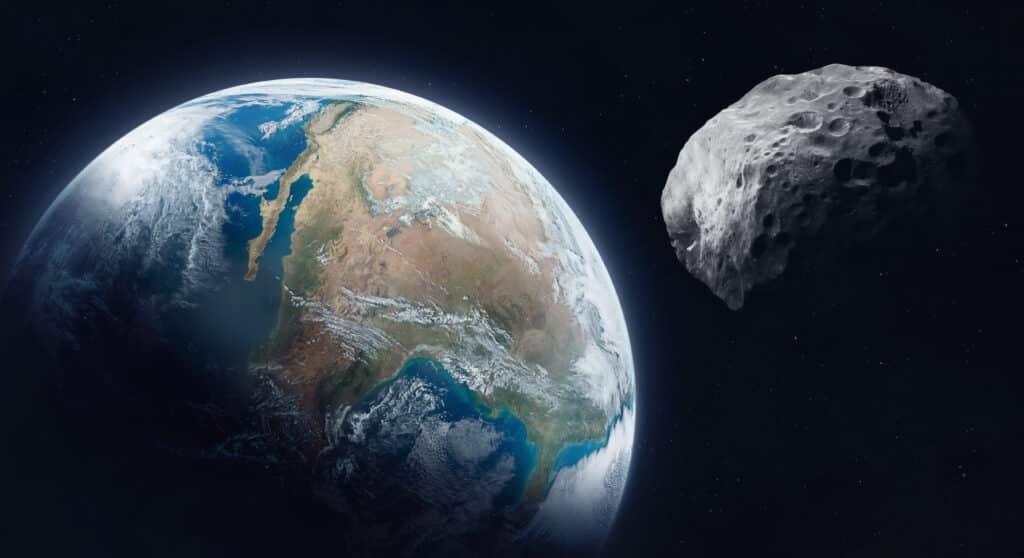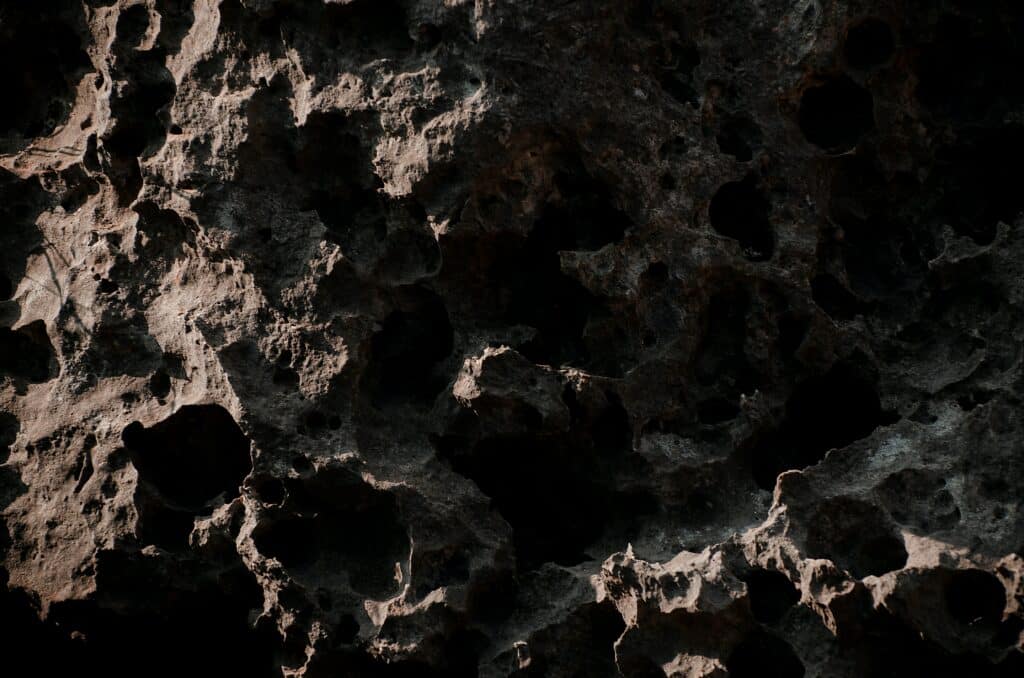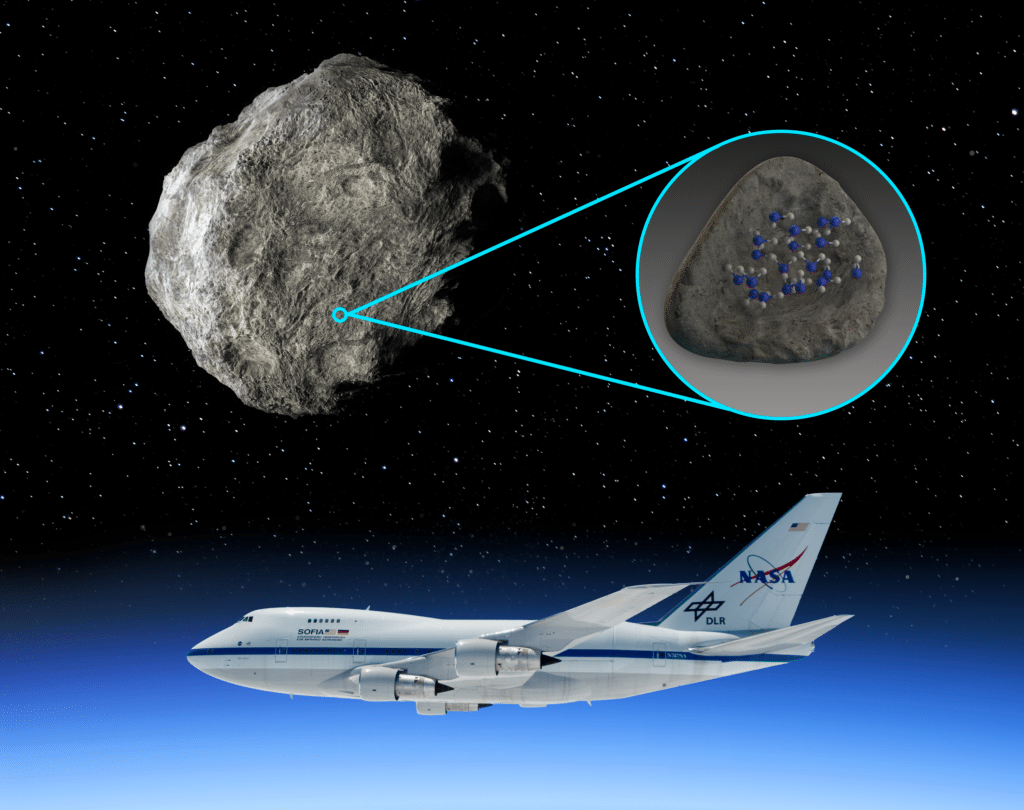Key findings:
- Scientists have identified molecular water on two silicate-rich asteroids, Iris and Massalia, using the FORCAST instrument on the SOFIA telescope.
- This sheds light on the distribution of water in the early solar system and suggests asteroids played a role in delivering water to Earth.
- The use of advanced technology like the James Webb Space Telescope is planned to expand the study to more asteroids, enhancing our understanding of water’s distribution in the solar system and its implications for astrobiology.
In what could have come out of the Apple TV+ space drama “For All Mankind,” scientists have made an astonishing discovery on the surface of asteroids — water. This finding, a collaborative effort between NASA and the German Space Agency at DLR, marks the first time water has been detected on these celestial bodies, offering new insights into the origins of water in our solar system and potentially across other solar systems as well.
The research focused on four silicate-rich asteroids, employing the FORCAST instrument aboard the retired Stratospheric Observatory for Infrared Astronomy (SOFIA) to capture mid-infrared spectral signatures that are indicative of molecular water. Out of these, two asteroids, named Iris and Massalia, showed unmistakable signs of water molecules on their surfaces.
“We detected a feature that is unambiguously attributed to molecular water on the asteroids Iris and Massalia,” says study lead author Dr. Anicia Arredondo, scientist at the Southwest Research Institute (SwRI), in a media release. “We based our research on the success of the team that found molecular water on the sunlit surface of the Moon. We thought we could use SOFIA to find this spectral signature on other bodies.”

This discovery is significant because asteroids are considered remnants from the early days of our solar system’s formation. By studying their composition, scientists can glean information about the distribution of materials, including water, during the solar nebula phase.
“Asteroids are leftovers from the planetary formation process, so their compositions vary depending on where they formed in the solar nebula,” explains Dr. Arredondo. “Of particular interest is the distribution of water on asteroids, because that can shed light on how water was delivered to Earth.”
The differentiation between anhydrous asteroids, which formed closer to the Sun, and icy materials that coalesced farther out is crucial in tracing how water — a vital component for life as we know it—was dispersed throughout the solar system.
Previously, observations of the Moon and asteroids have detected hydrogen, but distinguishing between water (H2O) and hydroxyl (OH), a chemical relative of water, proved challenging. The use of SOFIA’s FORCAST instrument has now bridged this gap, allowing for the specific identification of water molecules. The findings suggest that the abundance of water on the studied asteroids is comparable to that detected on the sunlit surface of the Moon, where water is believed to be chemically bound in minerals or adsorbed onto silicates.
Although the study could not conclusively determine the presence of water on two fainter asteroids, Parthenope and Melpomene, due to noisy data, it has paved the way for further research using more advanced technology. Researchers plan to utilize the capabilities of NASA’s James Webb Space Telescope, with its precise optics and superior signal-to-noise ratio, to investigate additional targets.

“We have conducted initial measurements for another two asteroids with Webb during cycle two,” says Dr. Arredondo. “We have another proposal in for the next cycle to look at another 30 targets. These studies will increase our understanding of the distribution of water in the solar system.”
This exploration not only enhances our understanding of the distribution of water within our own solar system but also informs the search for potential life-bearing planets beyond. As scientists continue to uncover the secrets of water’s distribution and binding mechanisms on celestial objects, the implications for astrobiology and the quest for extraterrestrial life become increasingly profound.
The study is published in The Planetary Science Journal.
You might also be interested in:
- This Solar-Powered Plane Funded By NASA Could Scour Entire Planet For Water
- Aliens Watching Us From Faraway Worlds? Scientist Explains How It’s Possible
- Study Challenges Astrophysical Models, Revealing Earth’s Building Blocks Contained Water
- There’s less water on the moon than thought, study shows. So why is that important?
- JWST Detects Water Vapor On Rocky Exoplanet, But Could It Be From Another Star?













So . Comets are NOT ‘ Dirty Snowballs ‘ . Yes , I know this mentioned asteroids .
Either way , James McCanny Was Right !